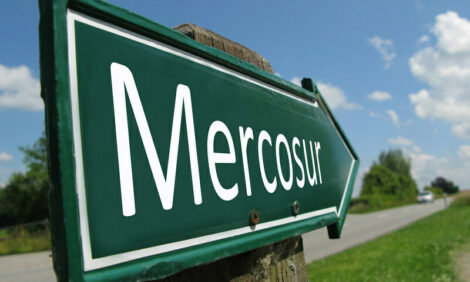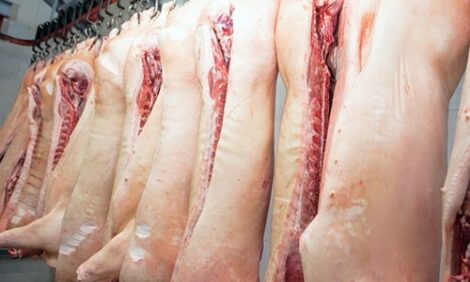There is certainly no shortage of pork
US Swine Economics Report - 17th September 2003 - Regular report by Ron Plain on the US Swine industry, this week looking at the biggest 7-day increase in hog prices in a year.
|
Need a Product or service?
|
|

Ron Plain |
What a difference a week makes. We started this month with barrow and gilt prices $10 per head below breakeven and are now $6/head above breakeven. From Thursday September 4 to Thursday September 11 the live price of barrows and gilts increased by $6/cwt (17.1%) at Sioux Falls, $8/cwt (23.5%) at St Paul, and $9/cwt (29%) at Peoria. The national average negotiated carcass price went up by $8.24/cwt (16.9%). This was the biggest 7-day increase in hog prices since September 13, 2002.
The run-up in hog prices was made possible by an equally dramatic increase in the wholesale value of pork cuts. During these seven days, the average price of pork loins increased by 22.4%, Boston butts went up by 30.8%, and 72% lean pork trimmings were up an amazing 38.8%. The carcass cutout value was up 10.8%.
Presumably the increase in wholesale pork prices represents a strengthening in retail demand. There is certainly no shortage of pork. During the entire month of August, we had only 6 days when hog slaughter totaled 380,000 head or more. We've already had 12 such days this month.
This is the second year in a row in which hog prices plummeted during August only to recover in September. Last year, the national average negotiated carcass price dropped from $51.82/cwt on August 1 to $28.03 on August 30 and then rebounded to $40.92 by September 30. This year, carcass prices dropped from $56.80/cwt to $47.37 during August. Hopefully, we'll end the month with prices well above $50.
The price paths last year and this year are both unusual. Normally, hog prices trend down fairly steadily from early summer to Thanksgiving. The big price drop during August 2002 was attributed to producers pulling ahead on marketings to avoid a widely expected price bust in the fourth quarter. This year's August price decline appears to have been driven by weak demand. The average deflated retail price of pork during August was 0.8% lower than in August 2002, despite a 0.7% decline in daily pork production and an 11.7% increase in retail beef prices.
Hopefully, this month's surge in wholesale prices reflects a turn around in pork demand. Daily pork production is sure to increase as we move into the fourth quarter. Without a pick-up in demand, cash hog prices are going to fall way short of what the futures market is predicting.


















